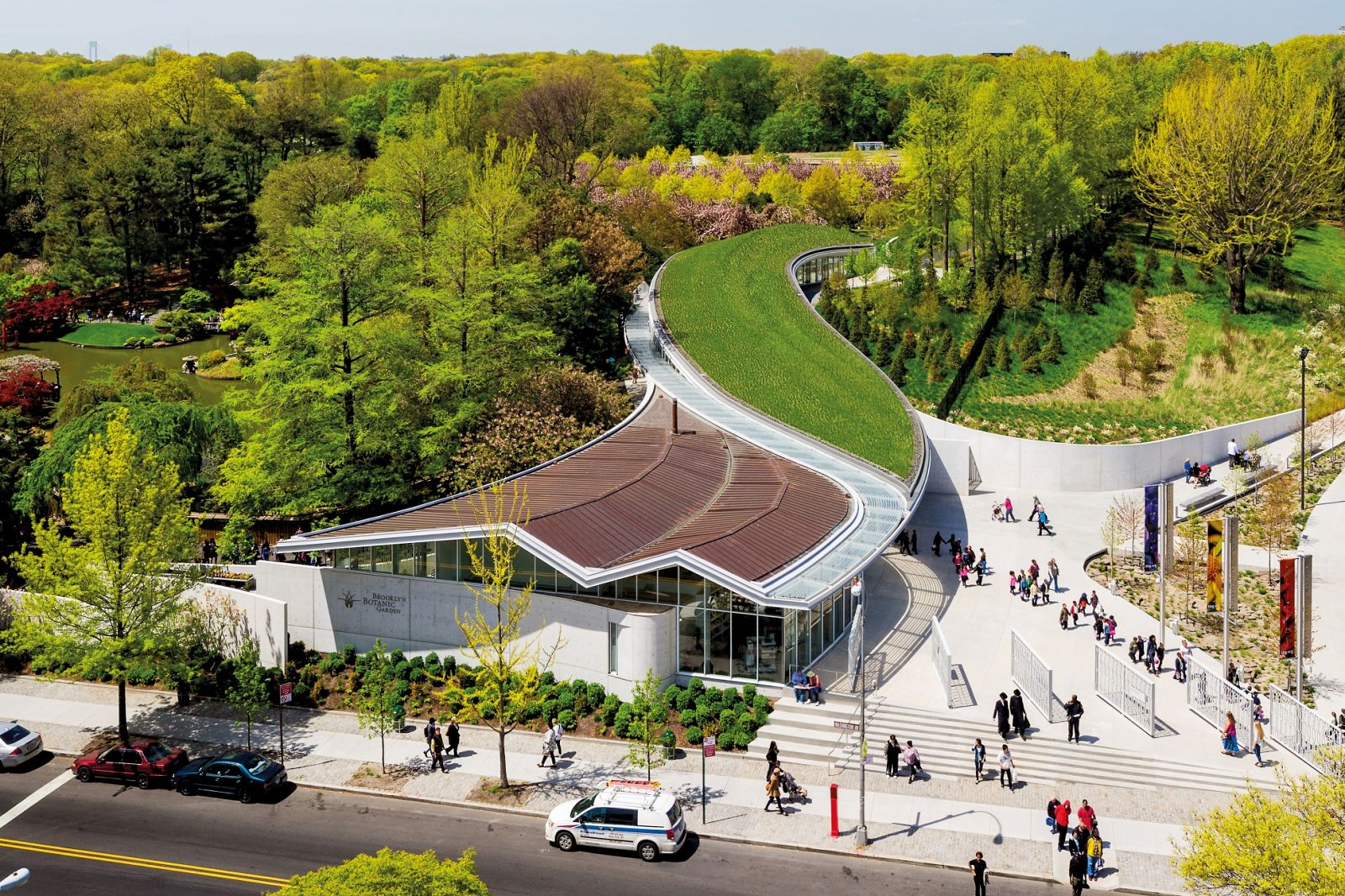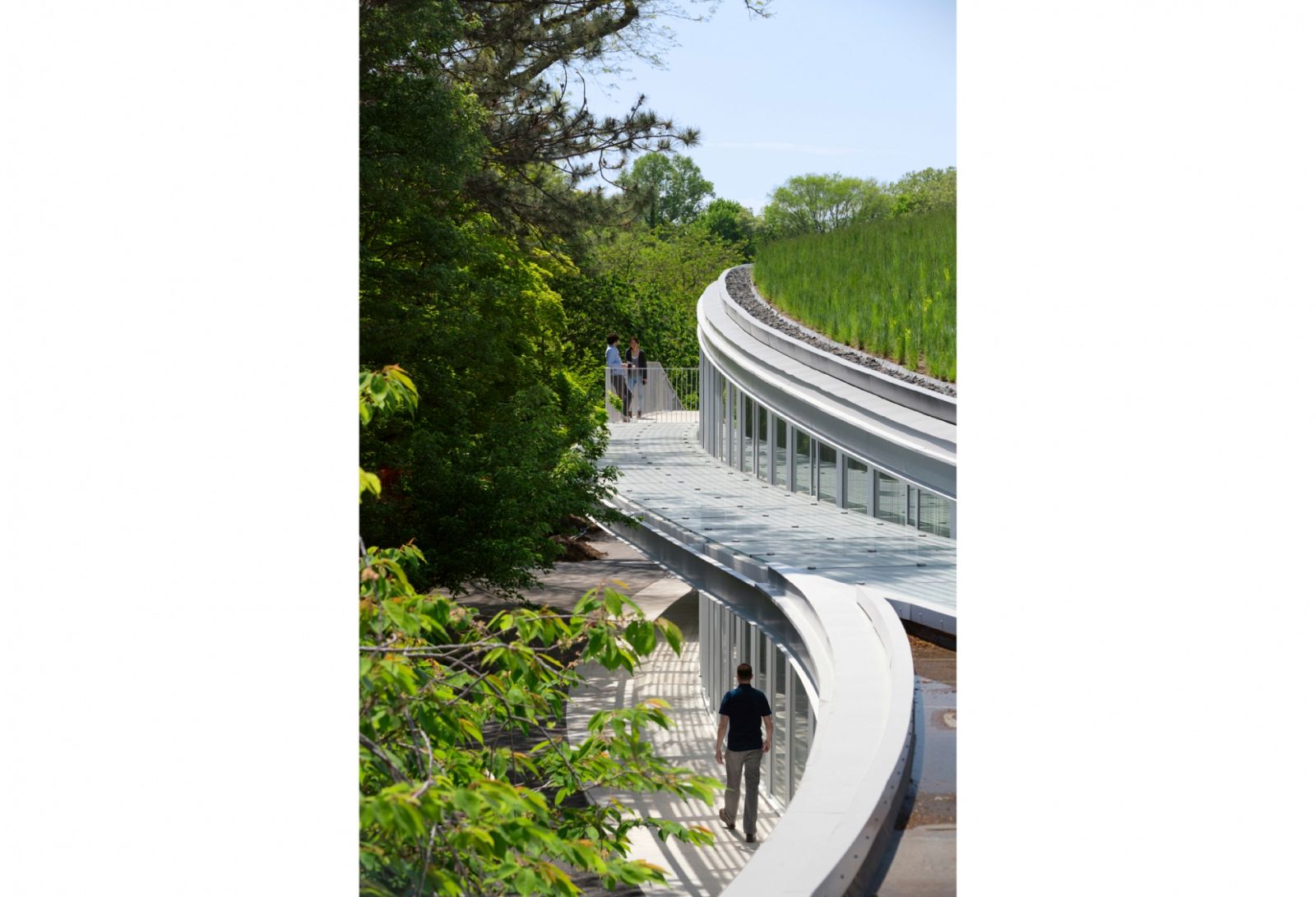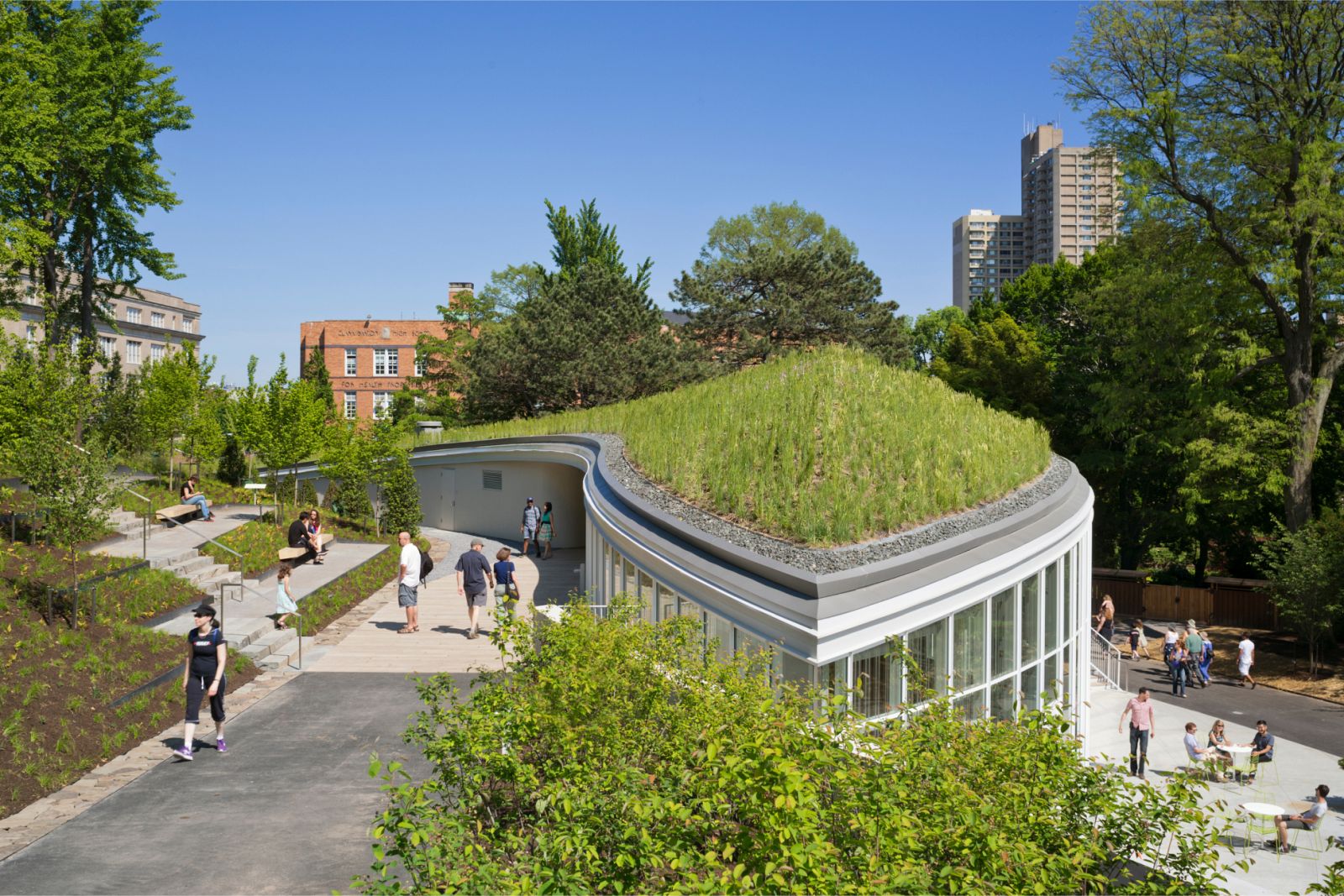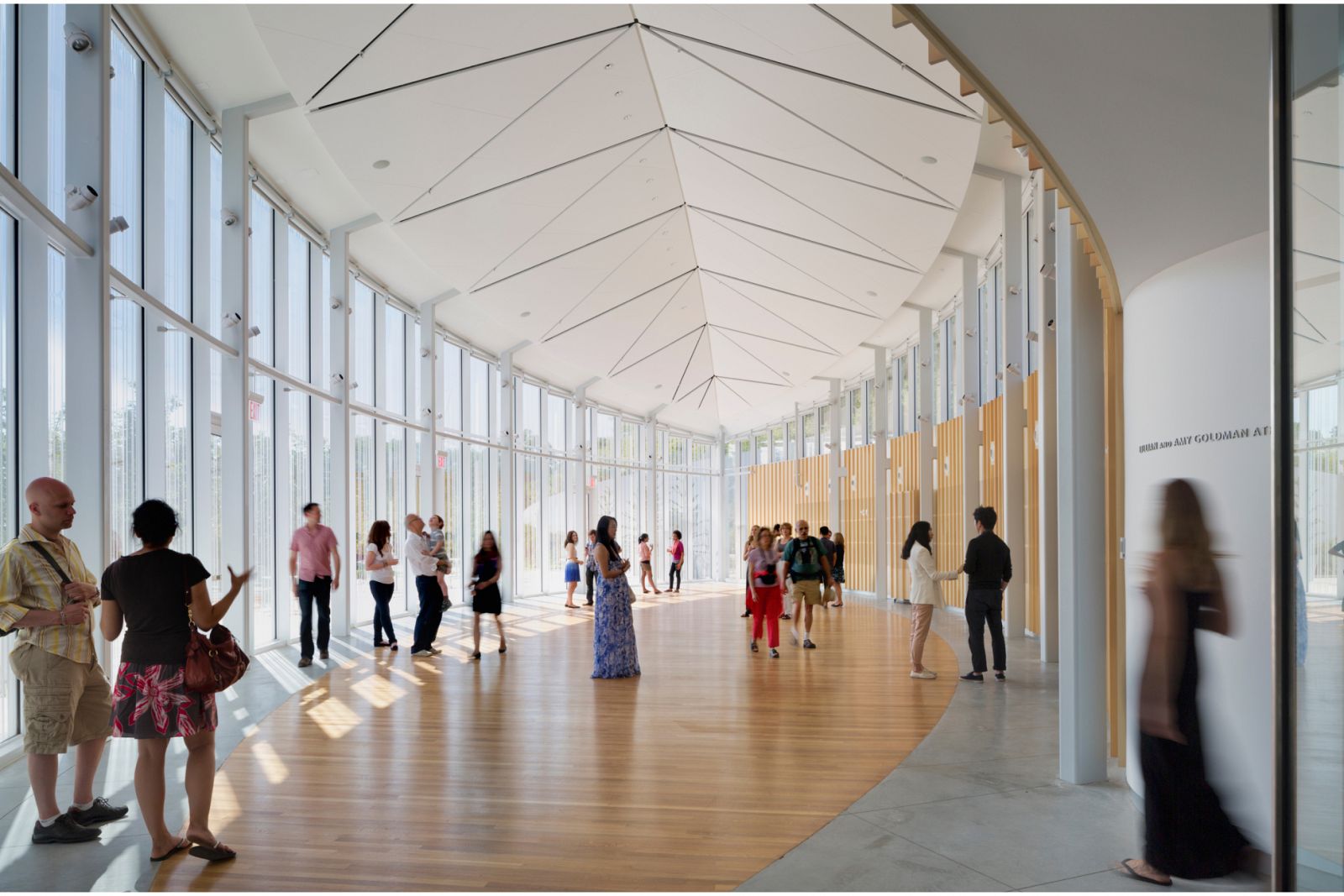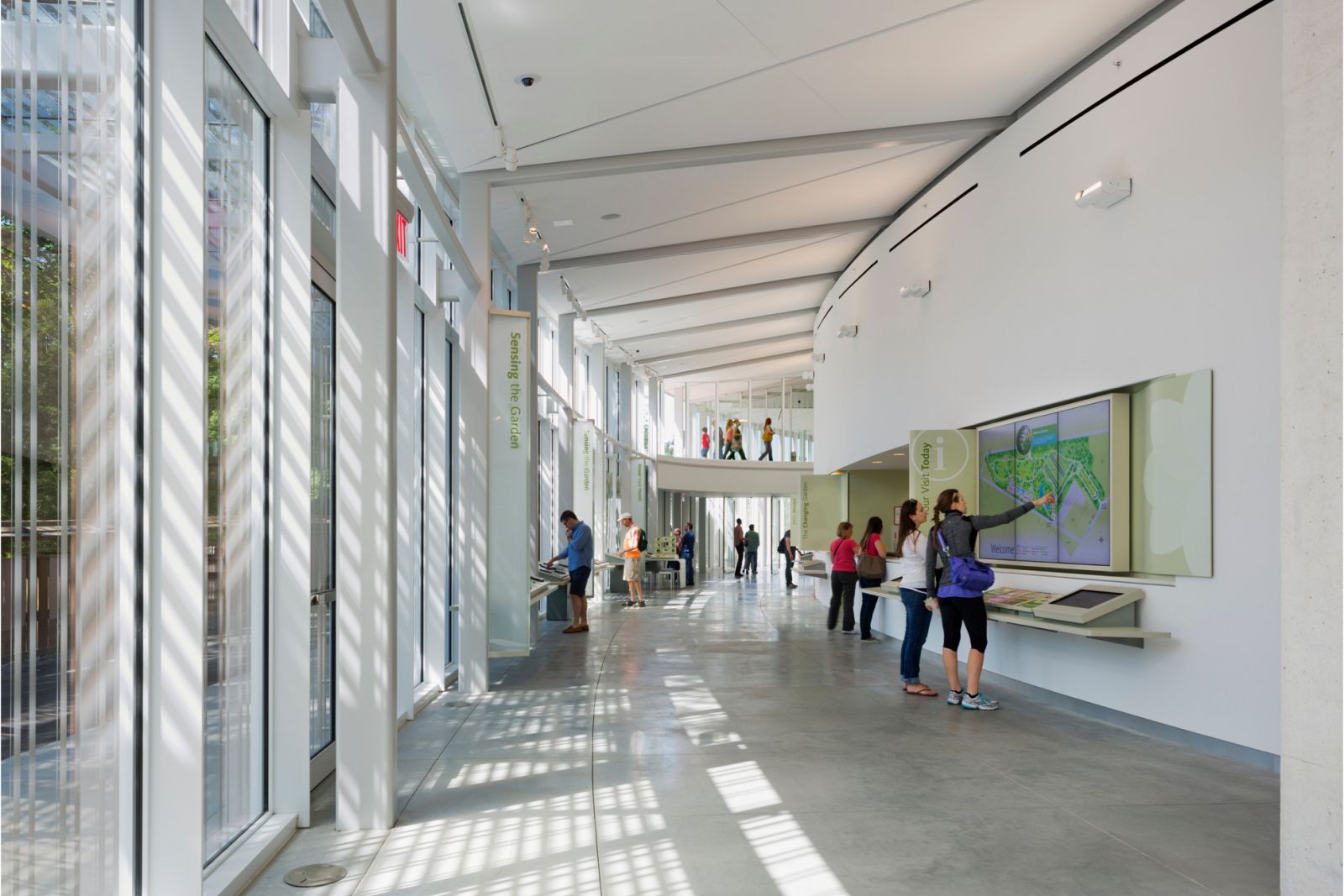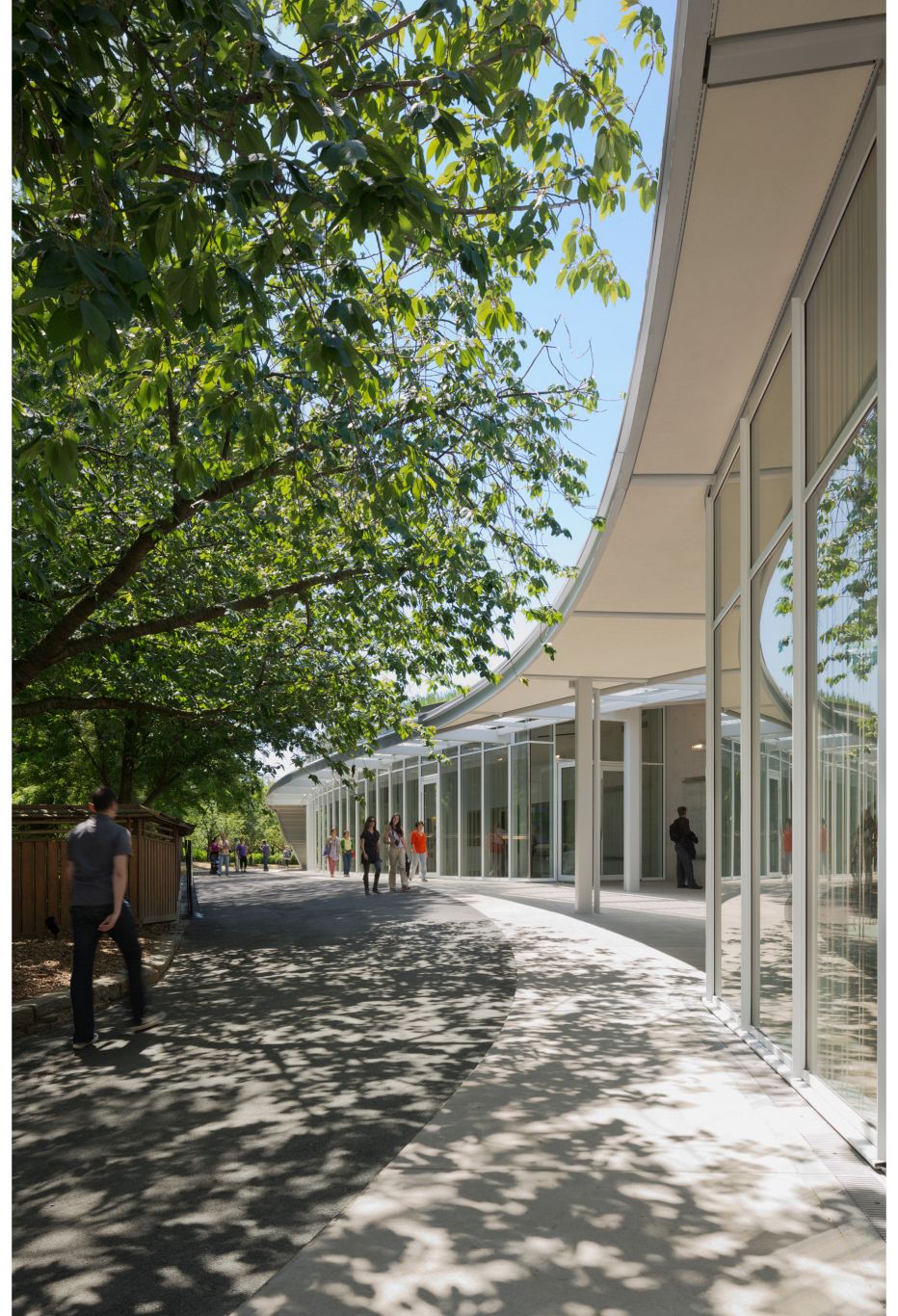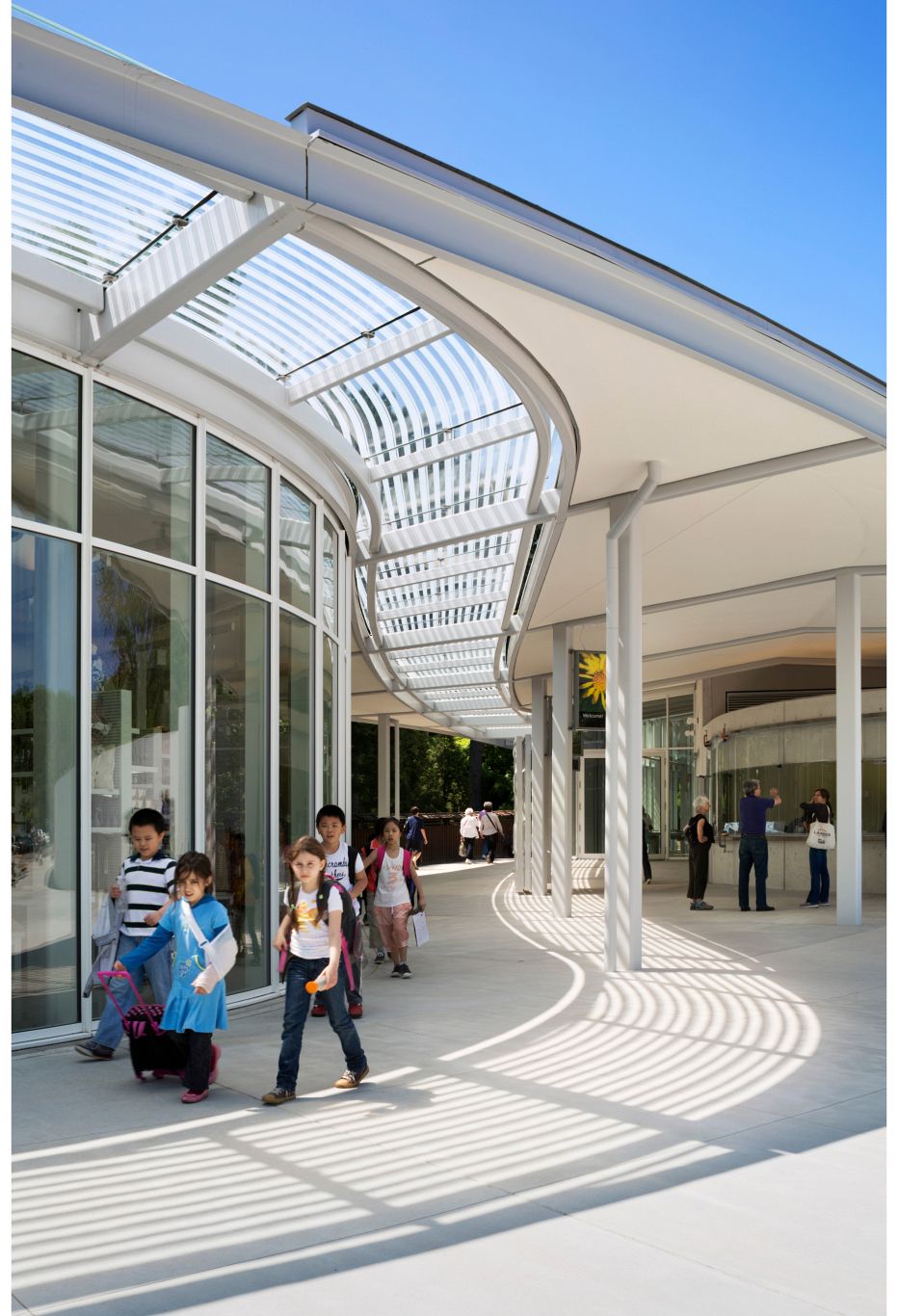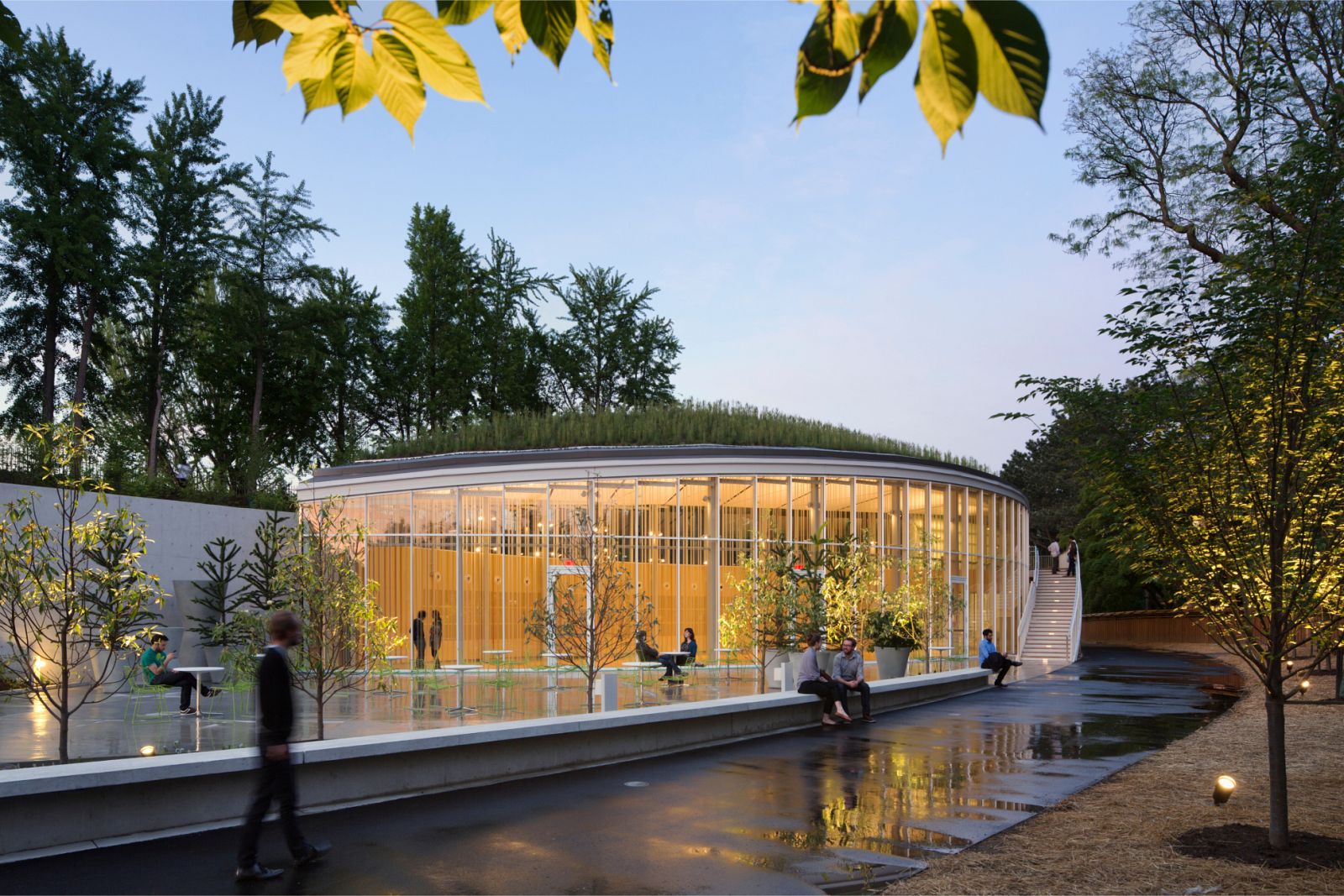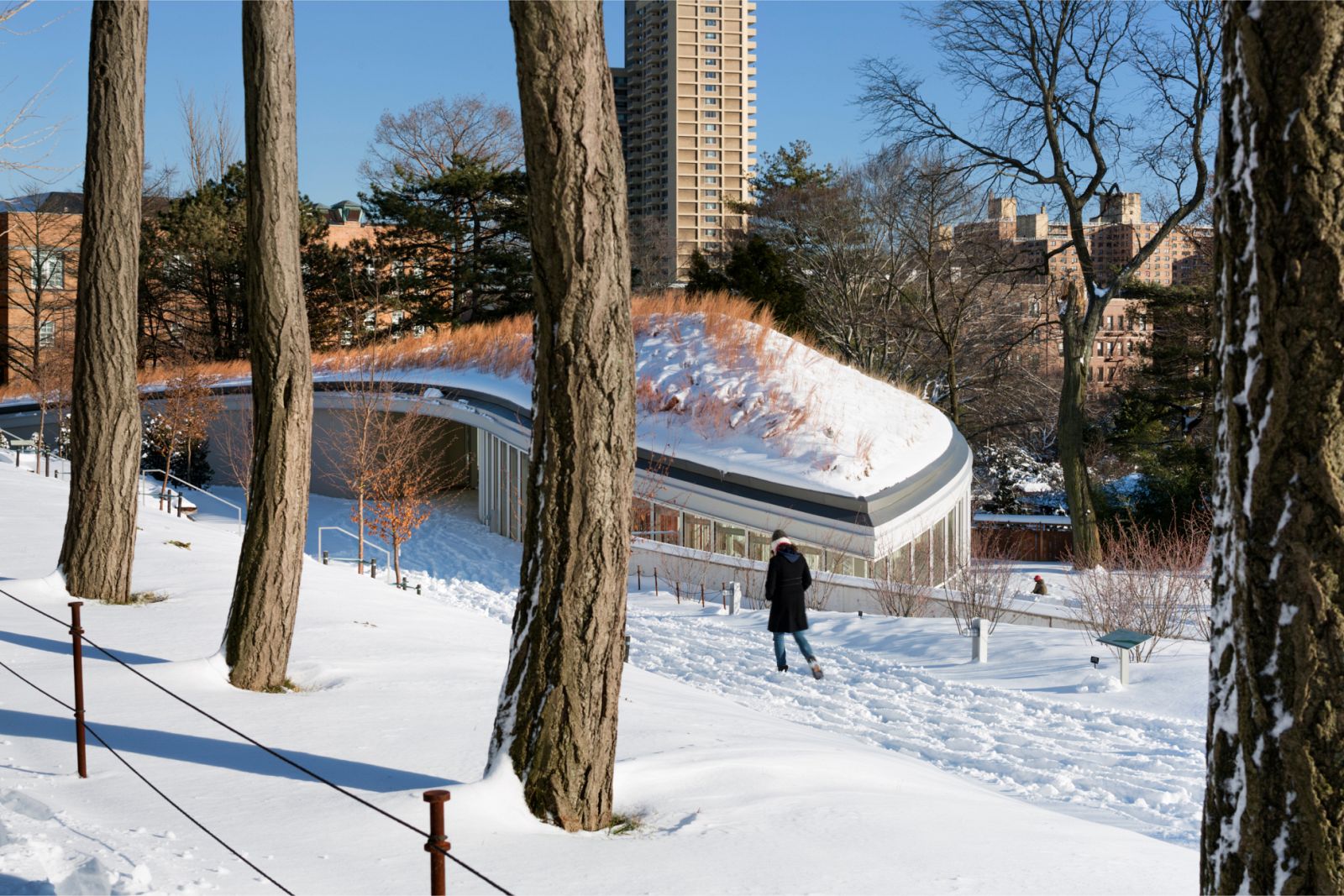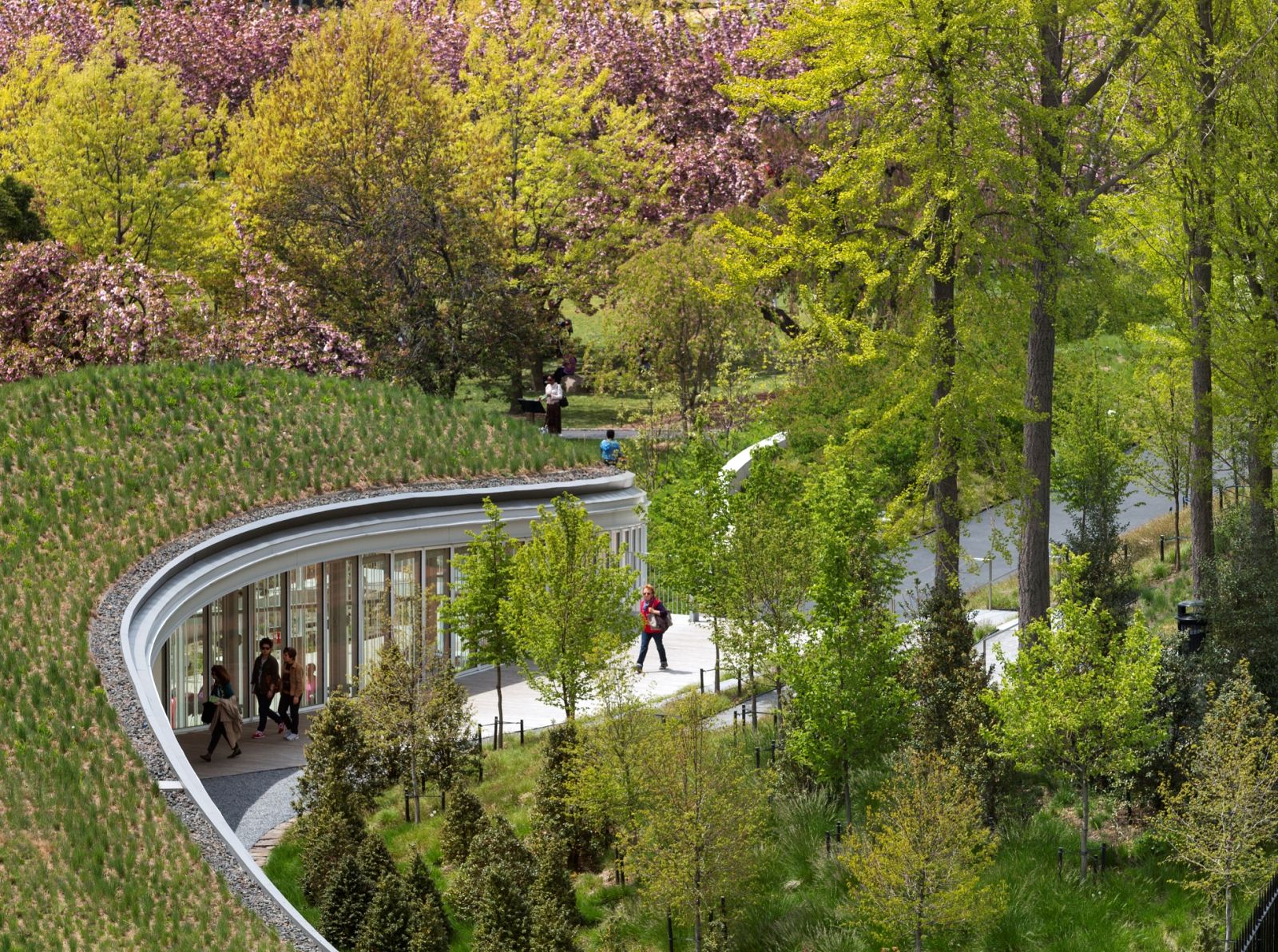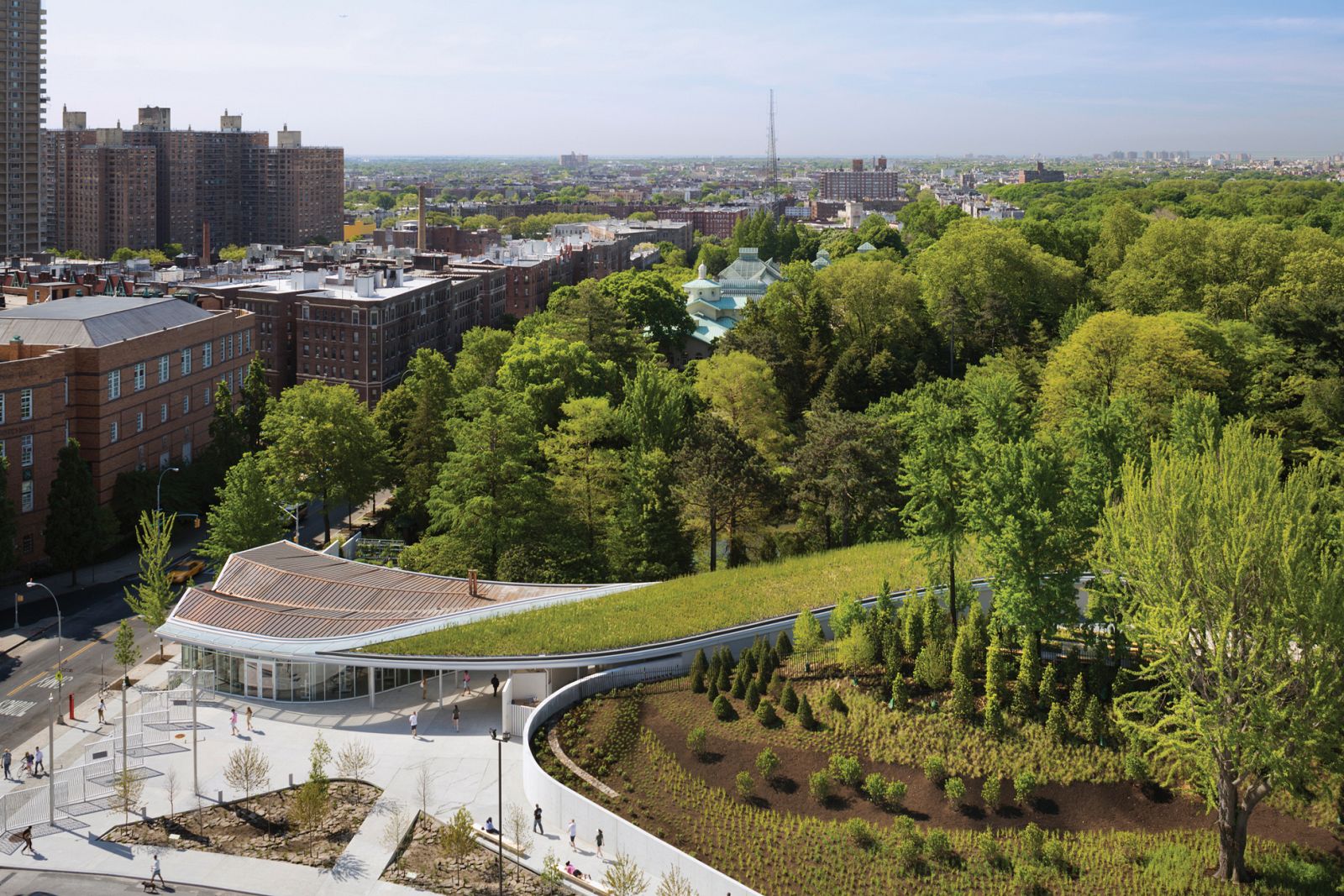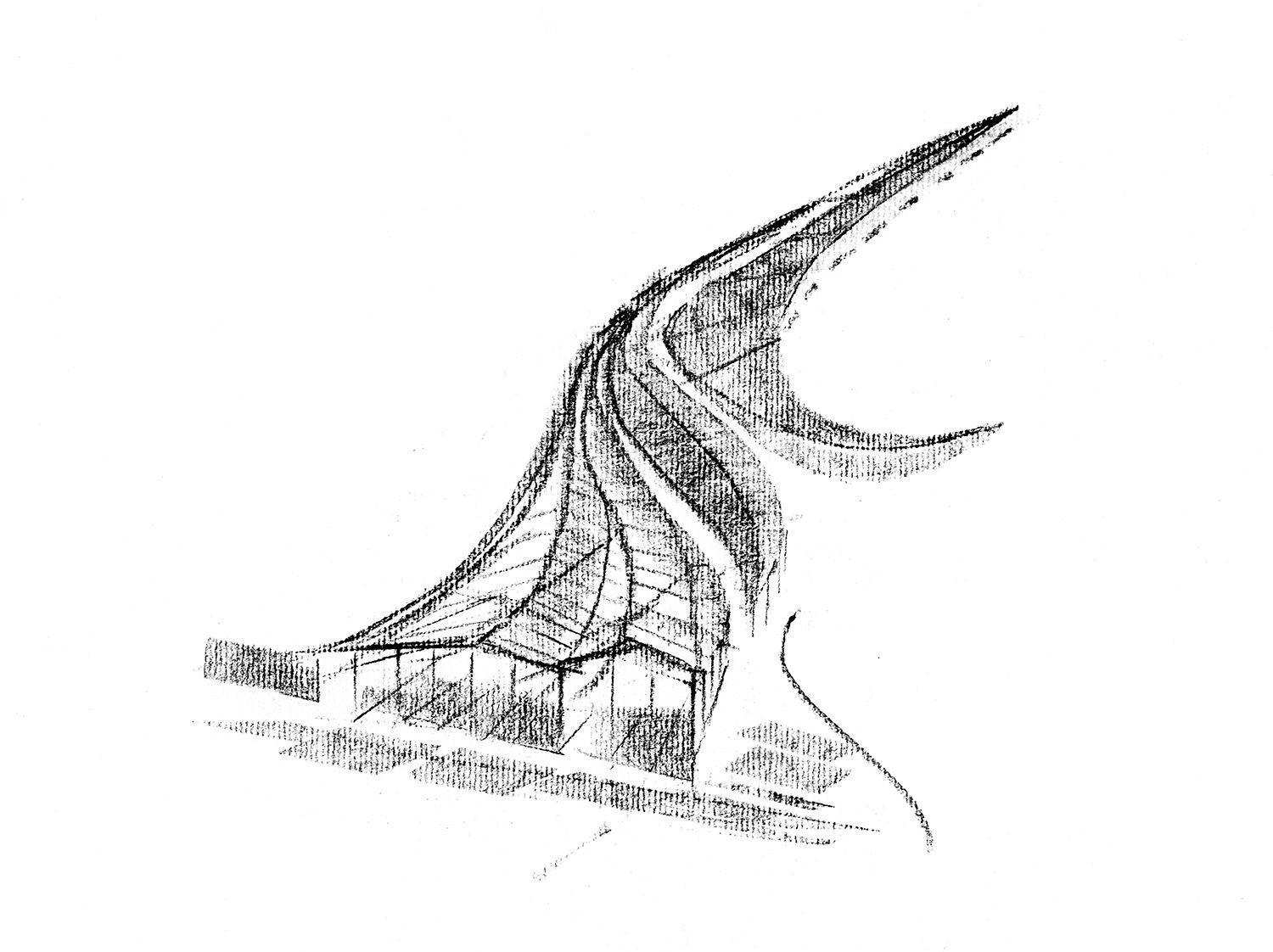Brooklyn Botanic Garden Visitor Center
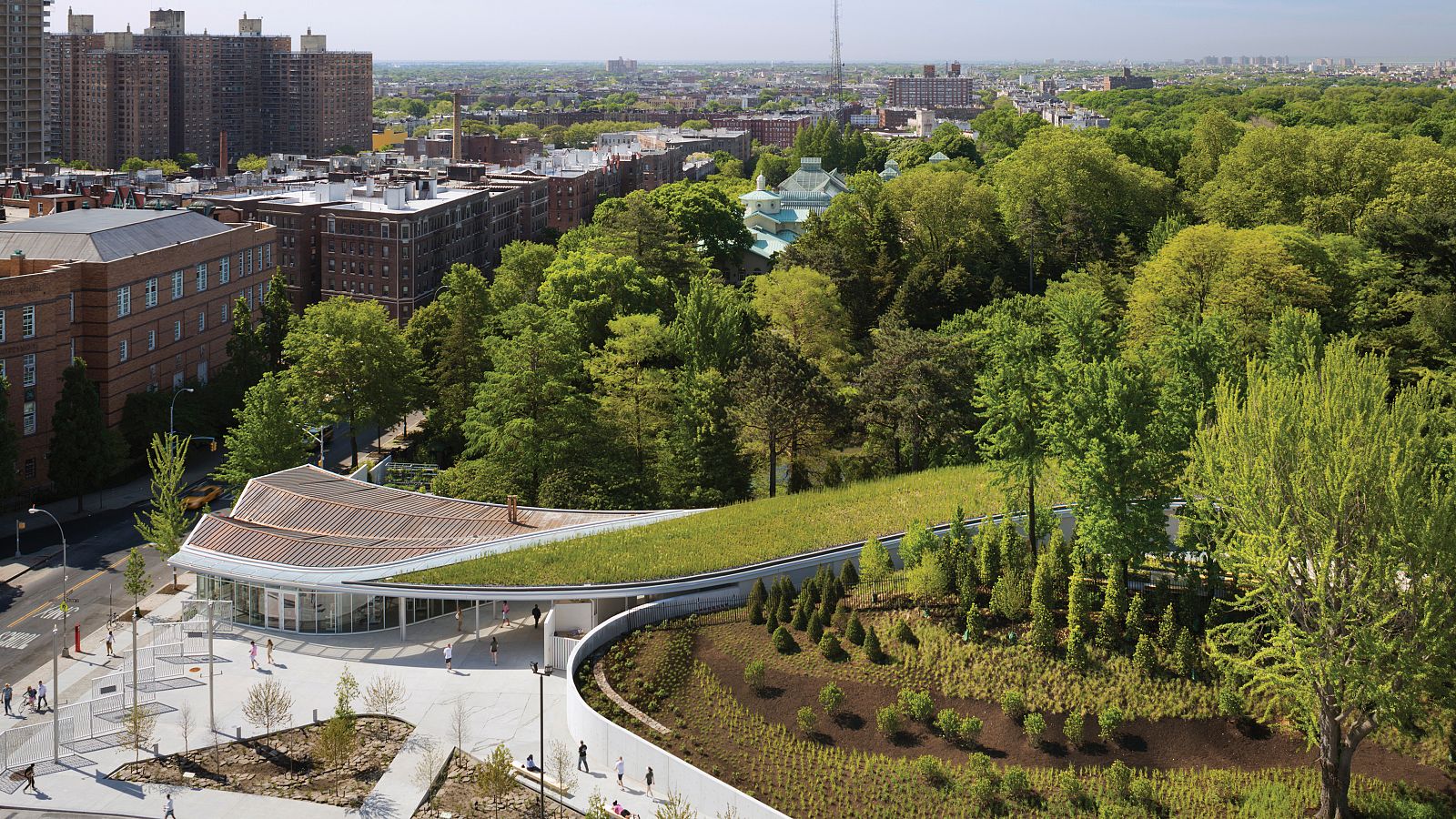




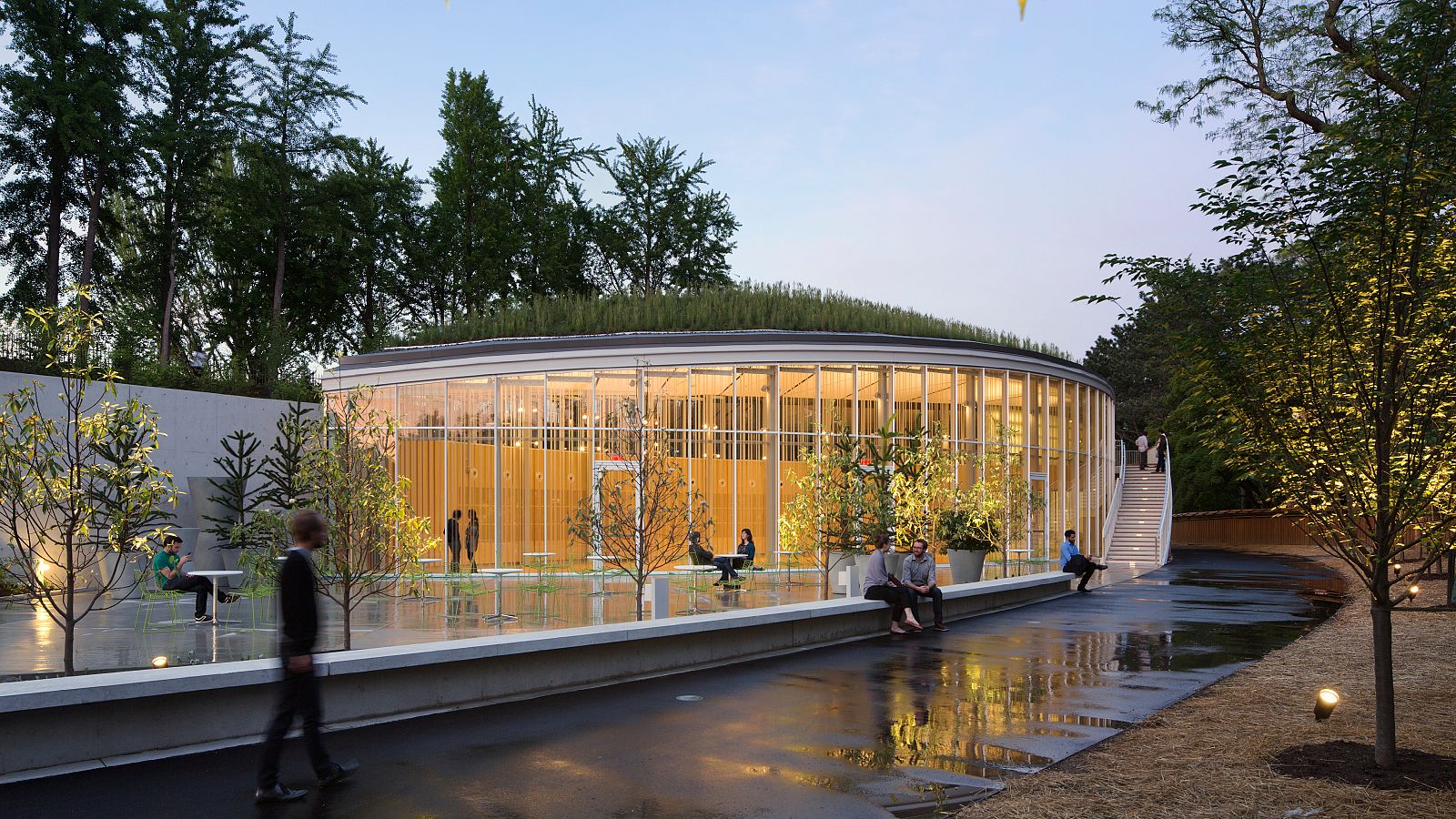
The Visitor Center provides a legible point of arrival and orientation, an interface between garden and city, culture and cultivation.
The Visitor Center for New York City's Brooklyn Botanic Garden is conceived as an inhabitable topography. To provoke curiosity and interest in the garden’s world-class collection, the building provides a legible point of arrival and orientation, an interface between garden and city, culture and cultivation.
The design of the Visitor Center is seen as a seamless extension of the landscape. Nested into an existing berm, the 22,000-square-foot building is experienced as a three-dimensional continuation of the garden path system, never seen in its entirety, framing a series of views into and through the garden.
Situated on Washington Avenue, the Visitor Center was created as a cinematic threshold that unfolds from the city to the garden, through exhibition galleries to an event space that mediates the transition outdoors to a terraced patio, spilling into the garden beyond.
A sustainably rich structure, the LEED Gold-certified Visitor Center redefines the physical and philosophical relationship between visitor and garden, introducing new connections between landscape and structure, exhibition and movement. Like the garden, the Visitor Center evolves with time. The building’s lush, curving green roof adopts four distinct identities, changing with the seasons. With its sustainable features, such as rain gardens, geothermal system, and native plantings, the Visitor Center is a showcase for environmental education.
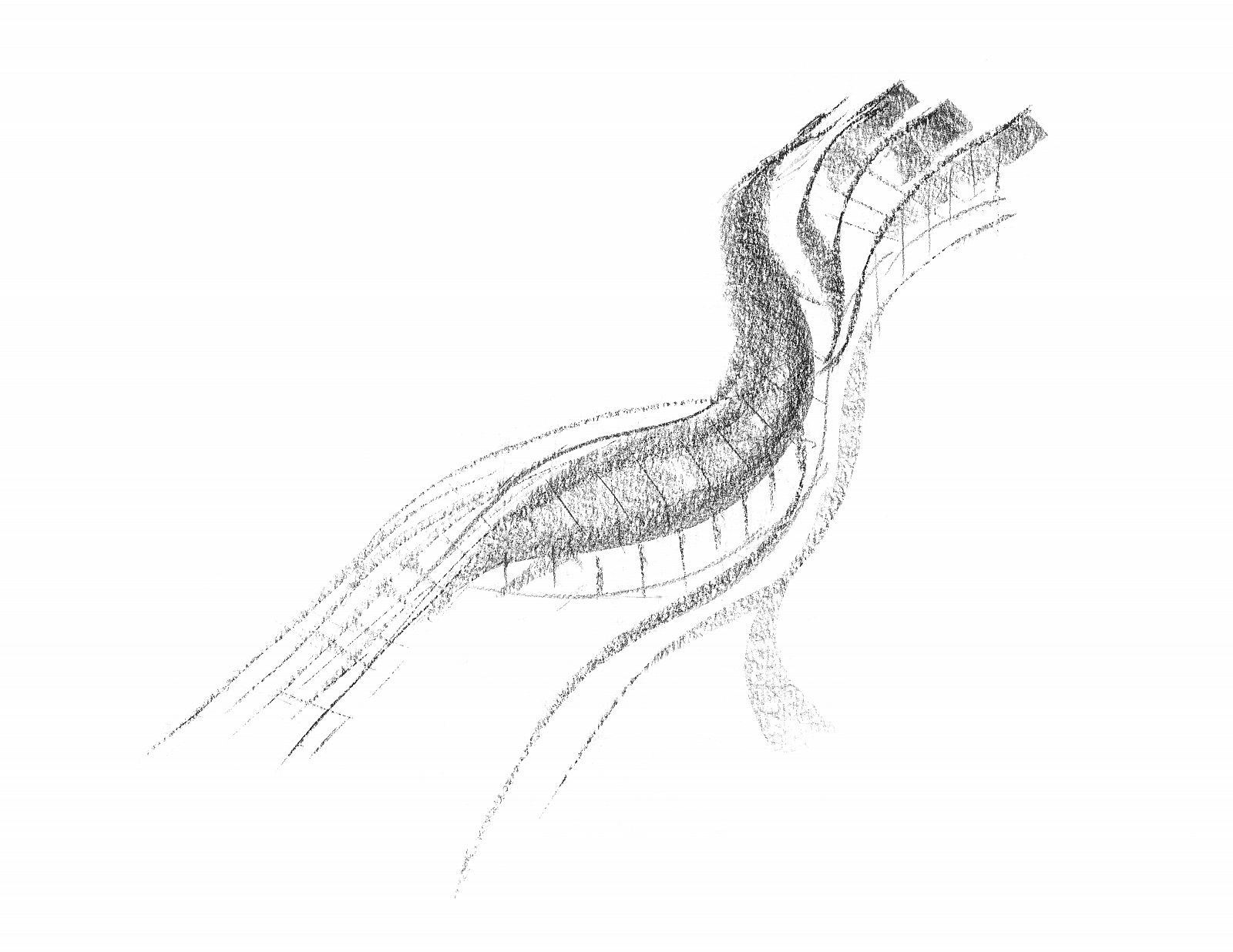
The building's serpentine form and chameleon-like structure is never seen in its entirety, much like the gardens themselves.
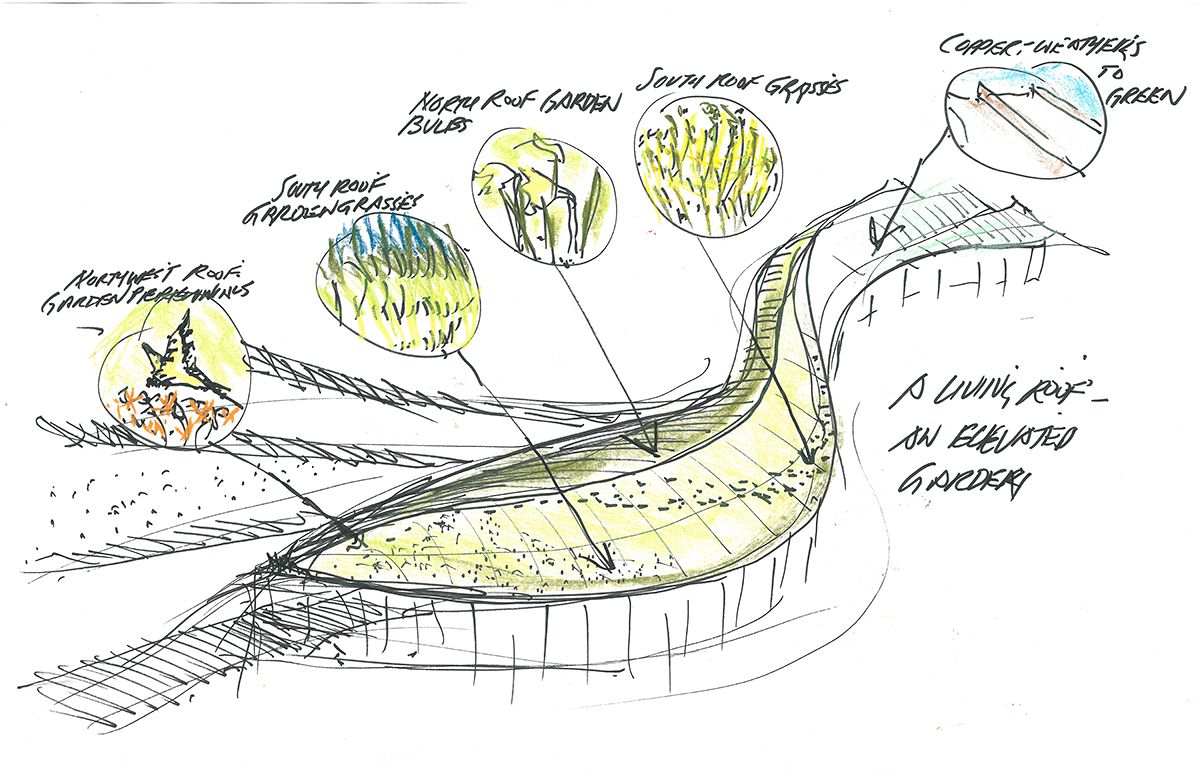
The Brooklyn Botanic Garden Visitor Center connects a collection of garden types, including a restored forest, a traditional rose garden, a formal cherry esplanade, and a Japanese garden.
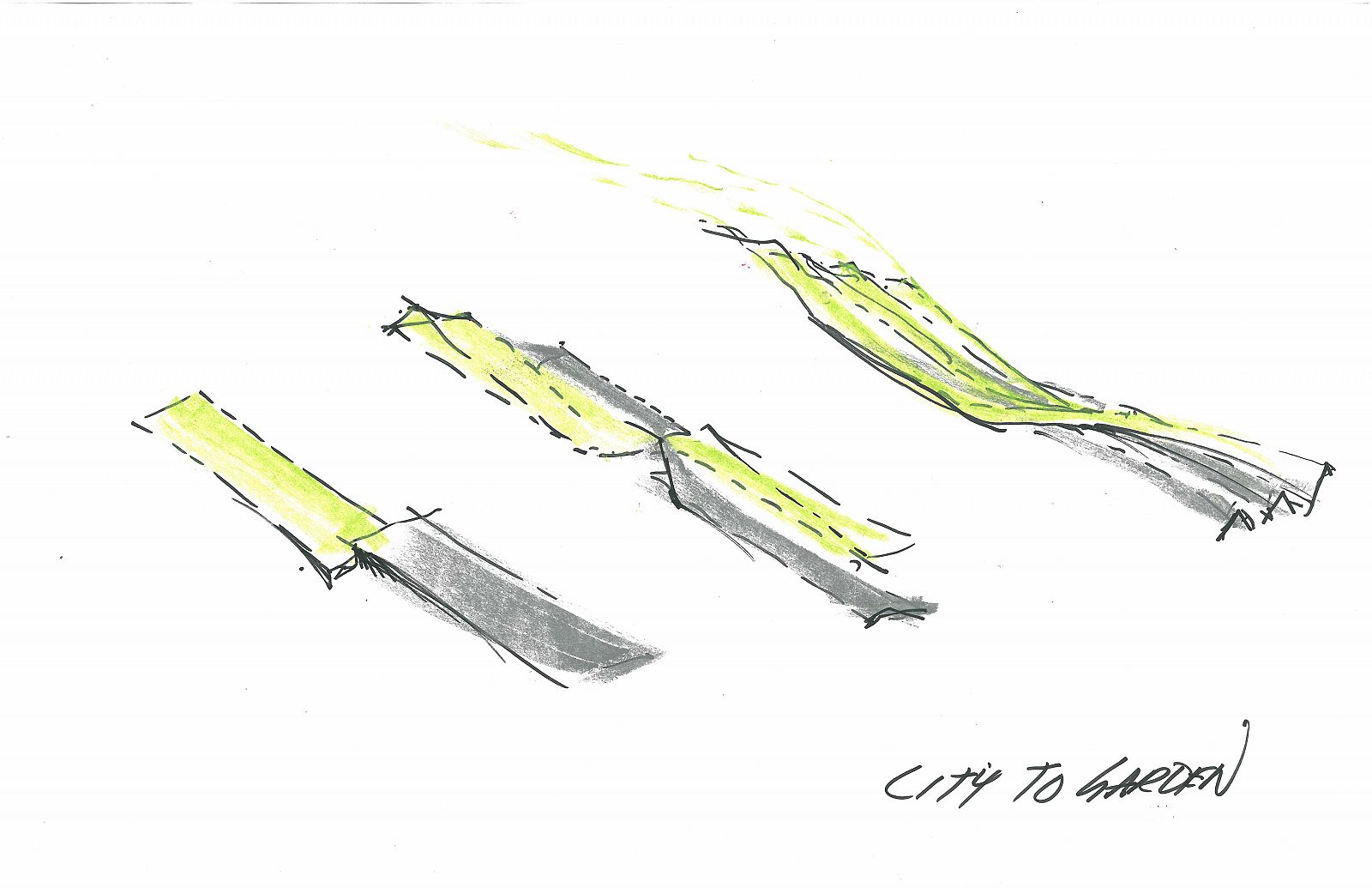
The topography of the site informs the architectural development of the visitor center through a sequence of distinct garden settings.
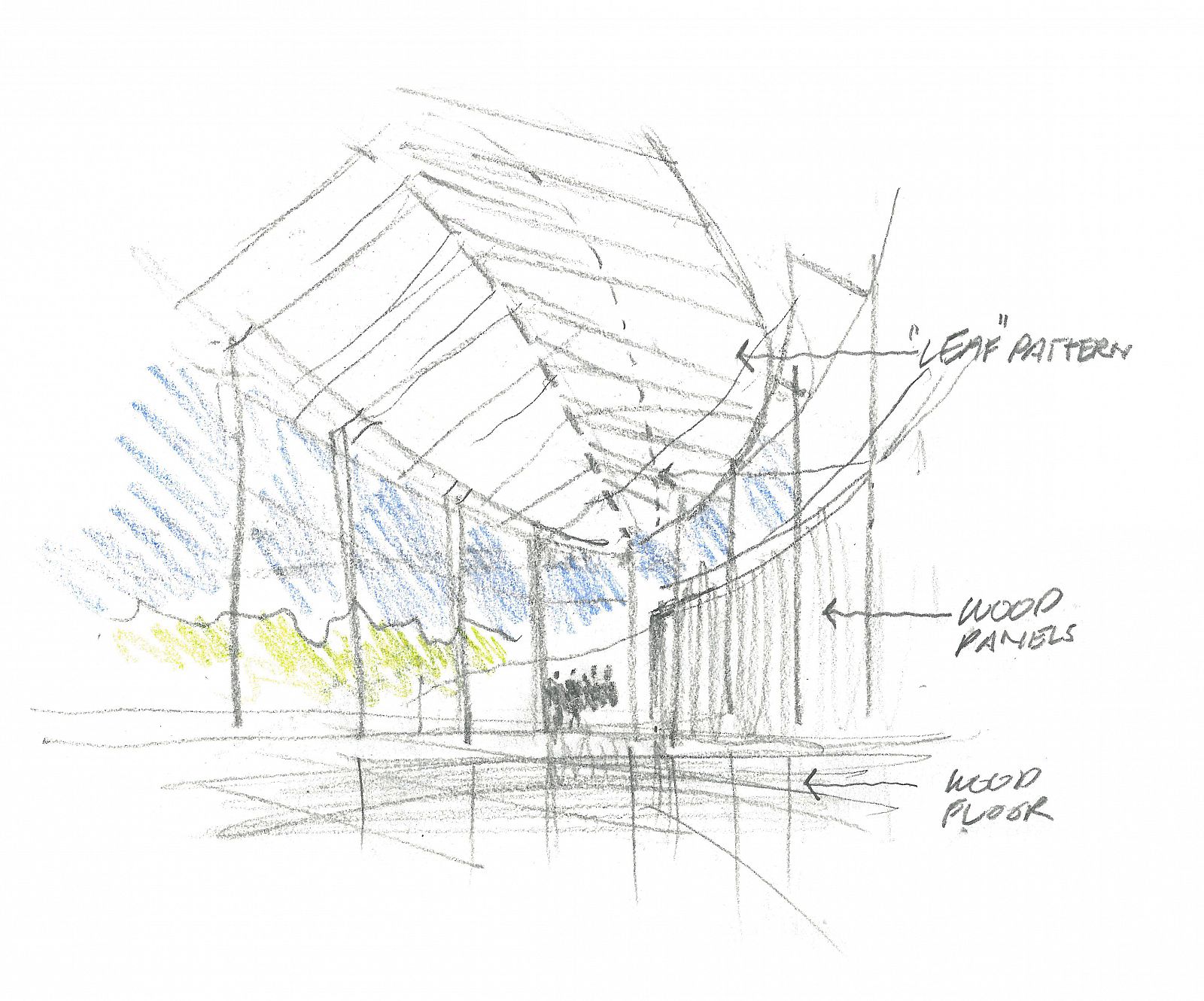
The building's leaf-shaped event space connects inside and outside. It's interior wood paneling is milled from ginkgo trees that were harvested from the building site.
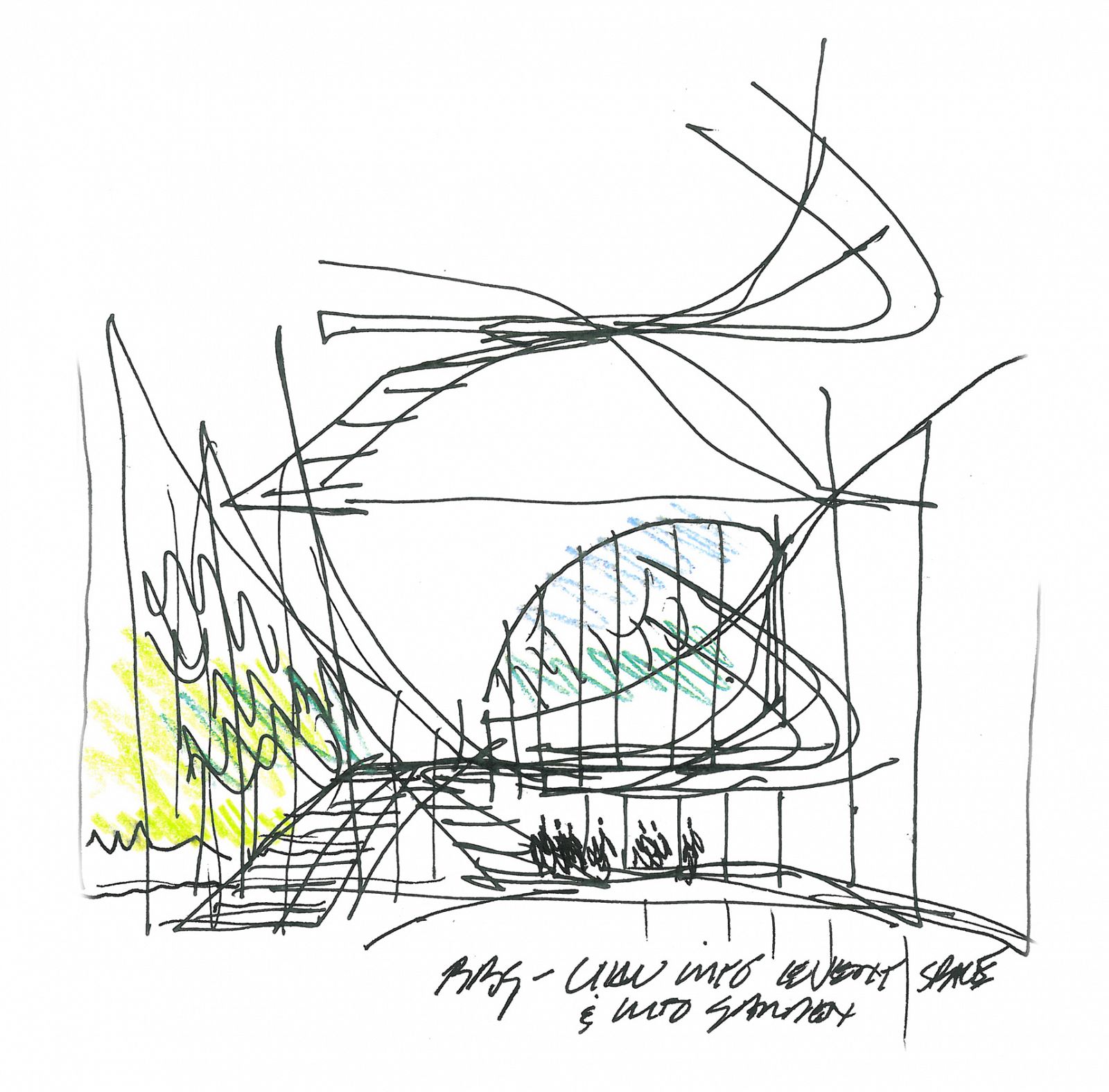
The Visitor Center's educational hallway, shaped by curved glass walls, allow for veiled views of the garden across the length of the site.
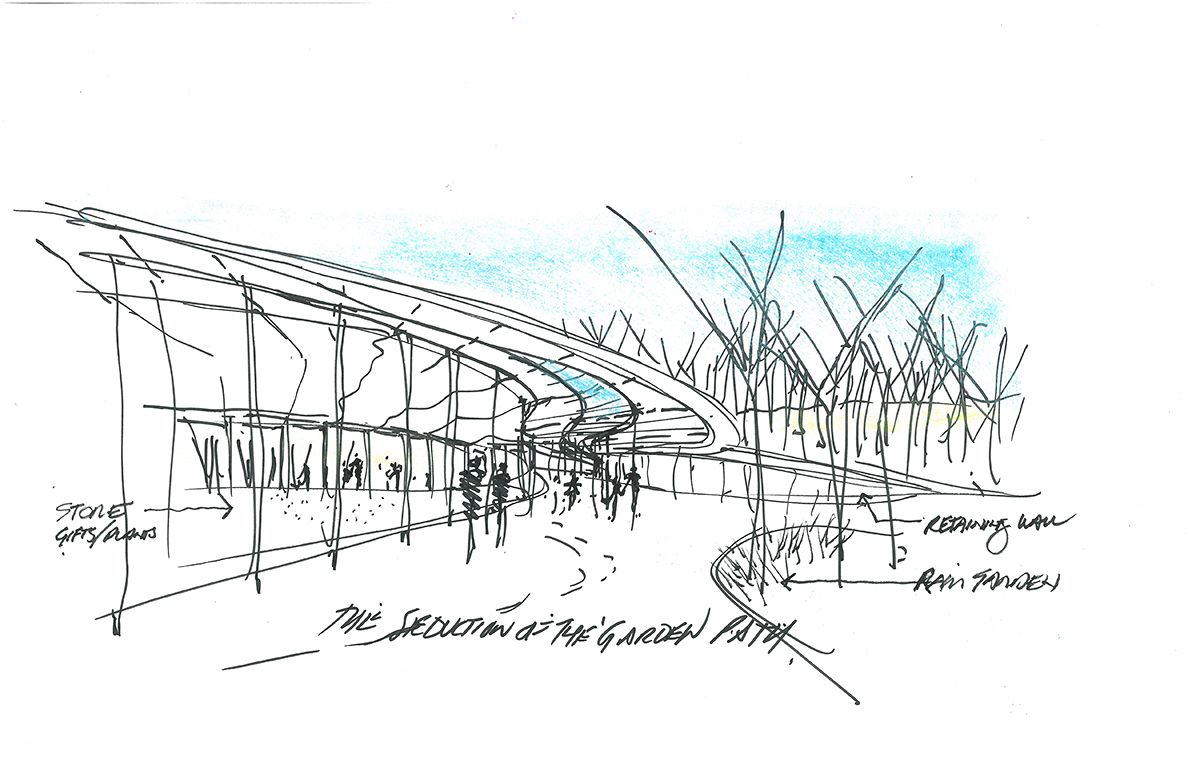
A canopy shelters the main entry route to the Visitor Center. This route wanders through the building and connects to an upper-level garden path and allows views of the garden to become both hidden and revealed.
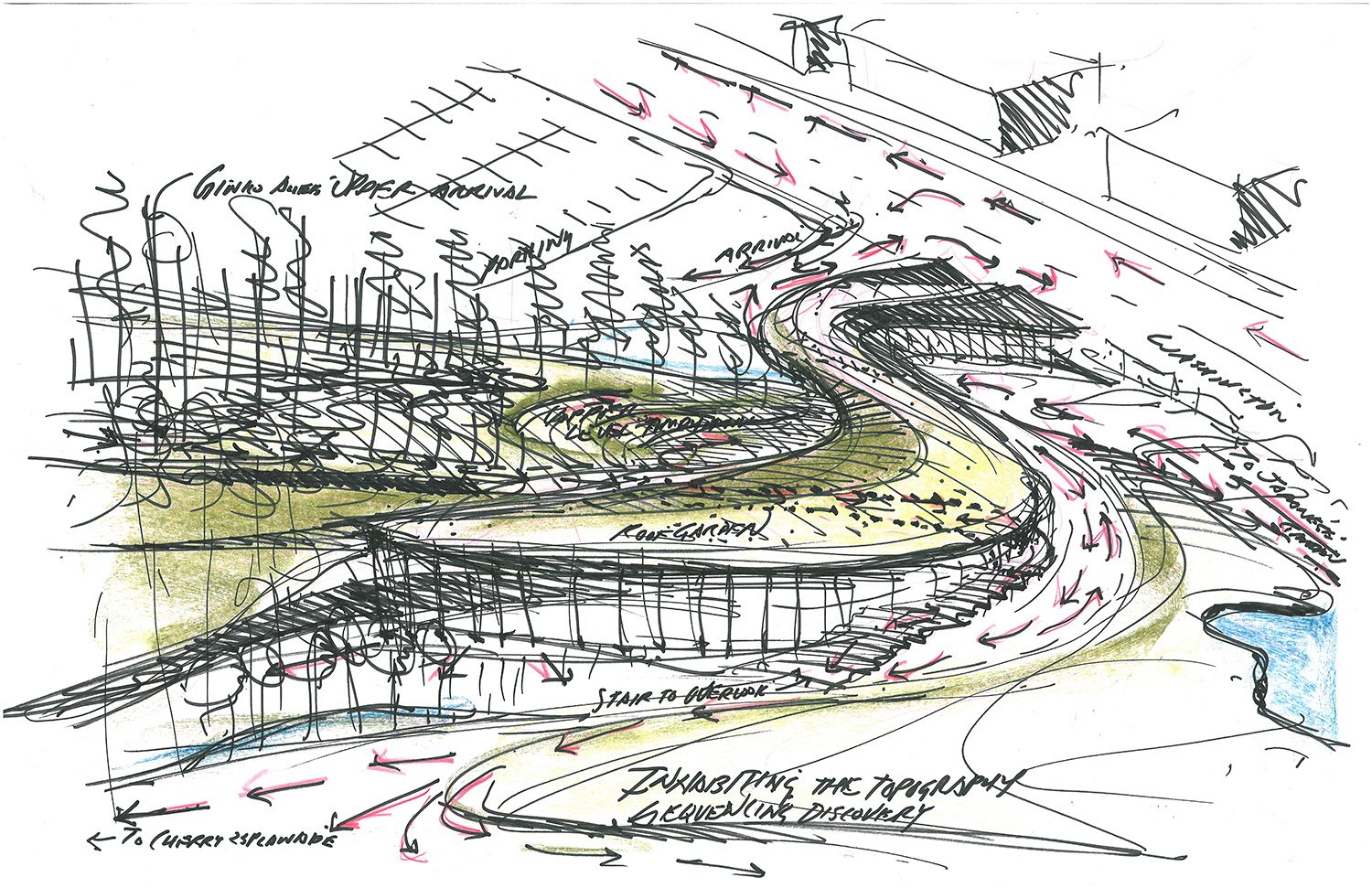
The Visitor Center's green roof offers stormwater management and rainwater collection, irrigating a series of landscaped terraces and contributing to the general health of the site. The green roof evolves over time, changing through the seasons.
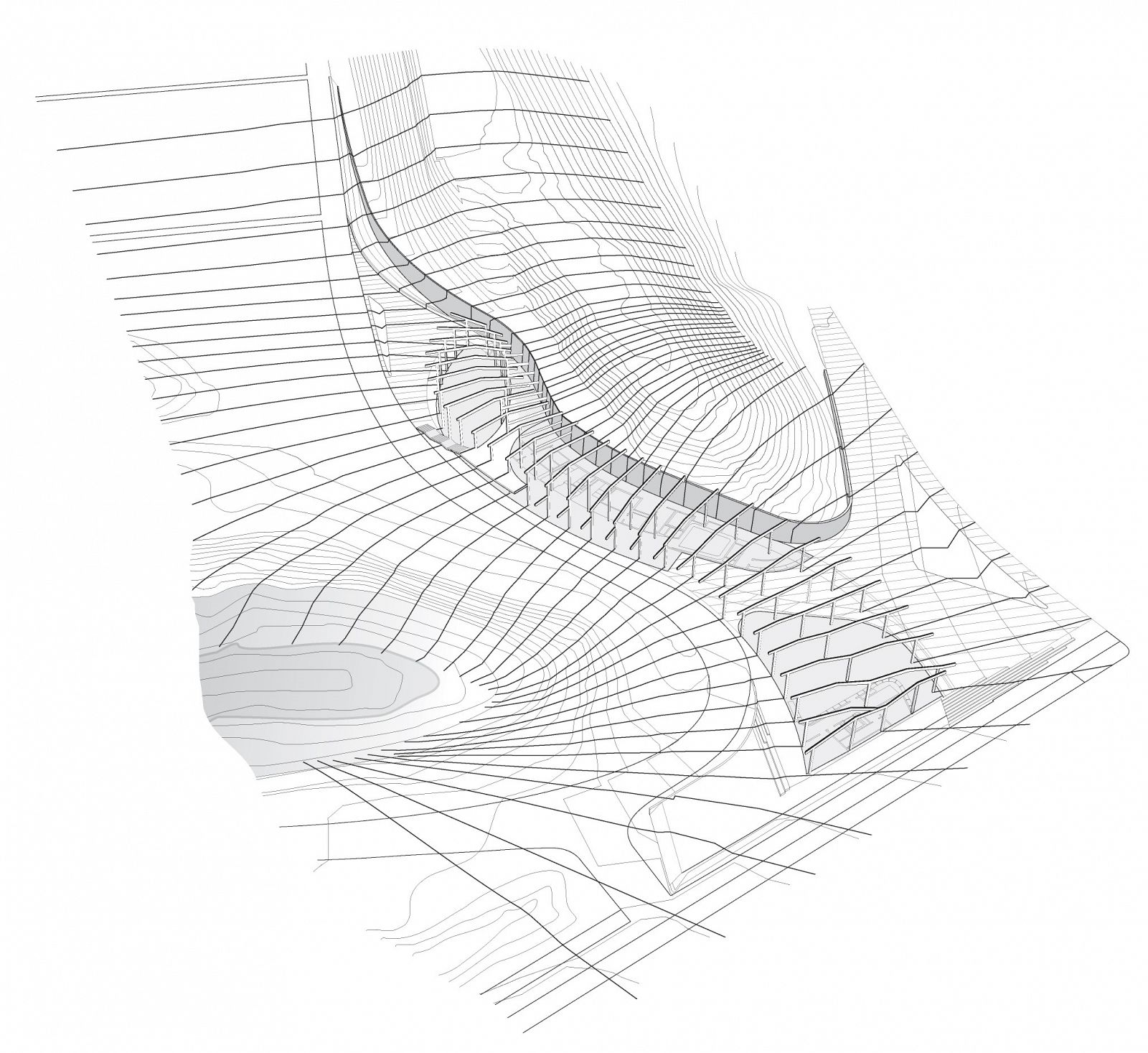
"As vegetation softens the pale concrete walls, and as the meadow on the roof matures, the building will model a relationship that other parts of New York should emulate: a tight new bond between urban landscape and concrete jungle that can make the city a more civilized place.”
Justin Davidson, New York Magazine
